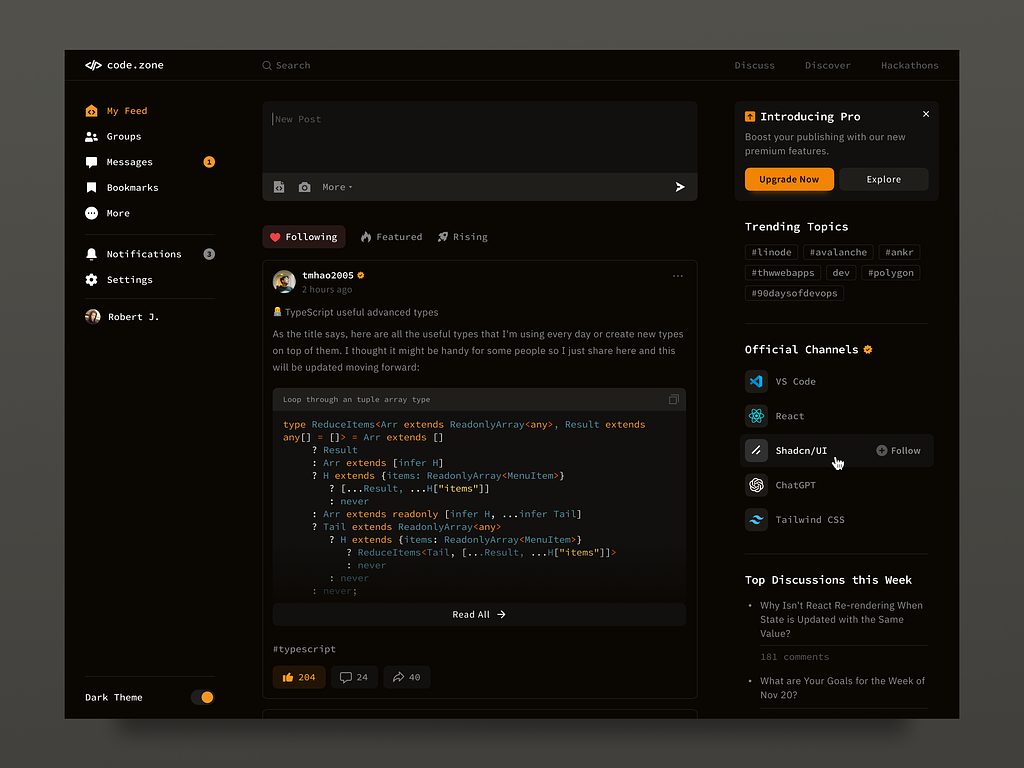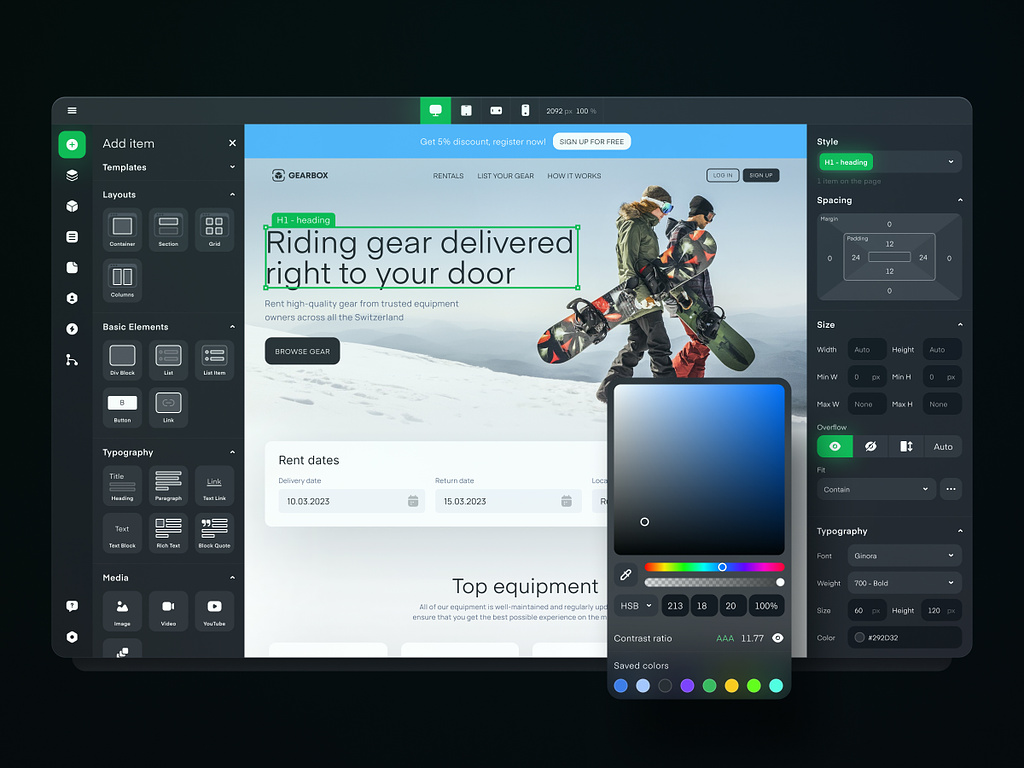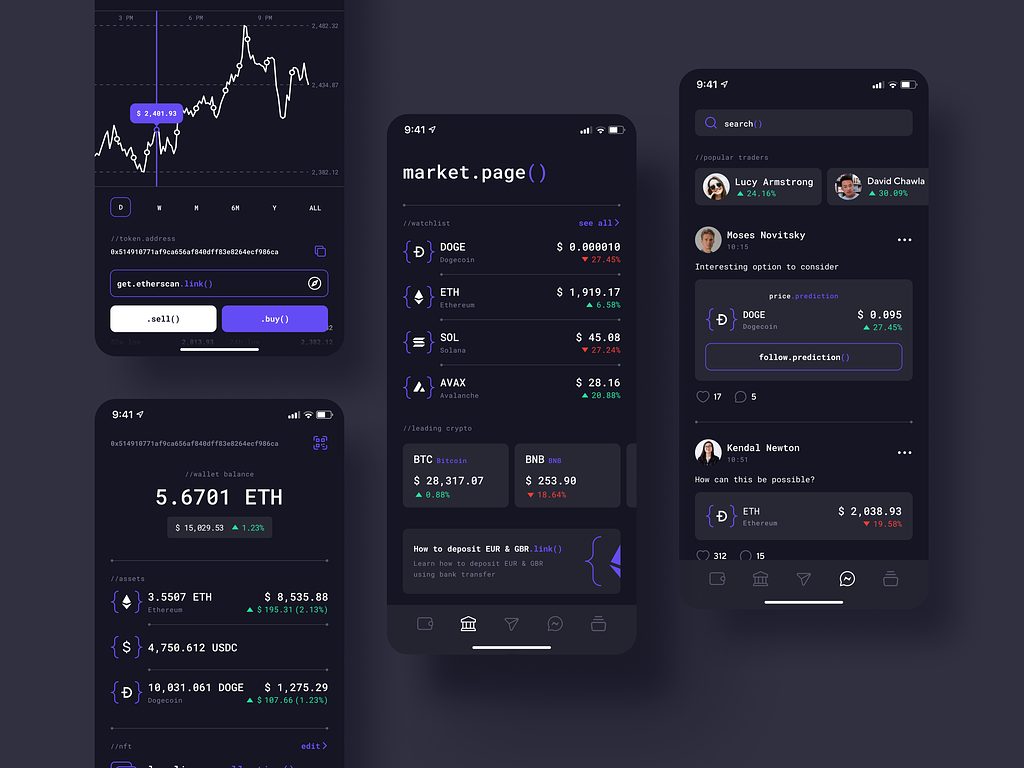Are you tired of spending hours debugging your code or struggling with complex syntax? We are too, that is why we are constantly searching for new tools. For several years, our team specialized in Ruby and .NET for backend development, and Python was not really the primary focus. Lately, we found more and more compelling reasons to include it in our toolkit. It’s hardly a new language, just picking up more and more steam lately.
Contents:
We’ve been tracking its growth along with the growth of AI and ML spaces and focused our attention on Python projects we take. It is a modern and powerful programming language that offers a wide range of great features.
In this article, we will explore the compelling reasons why Python may be a great choice for your next project, addressing your pain points and showing you how your team can make app development smoother and more efficient.

Social Web Platform for Developers by Shakuro
Why you should give Python computer language a try
According to Stack Overflow, around 65% of developers have used this language in the past year and want to continue using it. At the same time, almost 40% would like to try the technology. Here are some reasons why Python is popular among developers:
Syntax and features. The syntax is known for its simplicity and readability. So you can write code that is easy to understand and debug, resulting in faster development cycles and reduced error rates. Your team will find all modern language features from ranges and list comprehensions to generators, decorators, and flexible string interpolation. All are optimized for memory efficiency and performance. Using these makes programming an extraordinarily pleasant experience.
Typing system. Thanks to a loose typing system, you have flexibility in variable assignment and manipulation. However, the system also supports type hints, allowing you to define variable types for improved code clarity and reliability explicitly. It helps you keep your code base in great shape and catch many errors in characteristics with loose typing before they make their way into production systems.
Standard library. One of the major advantages of Python is its extensive standard library. It provides a vast collection of pre-built modules and functions that cover a wide range of functionalities, saving developers valuable time and effort. It’s accompanied by very detailed documentation with lots of examples, which makes it a breeze to use.
Mature object-oriented language. Python is an OOP programming language and offers a vast kit, including support for multiple inheritance, protocols and abstract classes. This allows you to easily create and implement class hierarchies as complex as necessary, providing a solid foundation for building robust and scalable applications. Other coding languages, like Ruby, provide class inheritance, but due to the lack of type hints (and thus static analysis), they haven’t gained deserved popularity and are often replaced by composition.
Elegant functional language features. In addition to its OOP capabilities, Python provides convenient tools for working with Data Transfer Objects (DTOs) through dataclasses that were added recently to the language. They give you a nice and easy way to collapse complex data container class initialization into a single-line decorator definition. Moreover, we find additionally generated methods for comparison and hashing render data classes even more helpful in data processing.

No-Code Development Platform by Shakuro
When designing a complex application with the future in mind, it generally makes sense to divide the app into layers (see Layered Architecture) of functionality. At the core, we have our domain objects, then the second layer is our application logic. Finally, the presentation layer that sends data to and back from clients and infrastructure. DTOs are necessary in this architecture to transfer data between the layers. Repackaging data has never been easier.
Cross-platform support. Python is a cross-platform language and offers full support on all major operating systems. It also takes the IoT industry and browser applications by storm. There’s a lot of work around tiny implementations for these. Whether you are developing on Windows, macOS, or Linux, Python ensures consistent performance and compatibility across different environments. Applications written in this programming language are easily packed into Docker containers for local development and distribution.
Tooling. It provides excellent tooling for various software development processes. From comprehensive testing frameworks to powerful code analysis and linting tools, Python‘s ecosystem offers a wide range of options to improve code quality and maintainability. Many of these tools are configured to run in our CI / CD pipelines to monitor code quality metrics constantly.
Extensive choice of libraries. One of Python’s major advantages is a vast amount of great libraries for just about anything. The coding language has first-class support from major players in the industry such as Amazon, Microsoft, and Google. The libraries they use for their services are always up-to-date and receive a decent amount of attention from the community, so they are always at the cutting edge of the industry.
Applications, written in Python, connect well to databases, message buses, storage clouds, and millions of other services, which immensely widens the choice of tools we use in our projects.
Artificial Intelligence and Machine Learning. Python computer language is particularly well-suited for machine learning and data processing tasks, making it an ideal choice for these fields. If you work in those industries, you have definitely heard of Numpy and Pandas powering the computations and data analysis. Hundreds (if not thousands) of tools are built using them to perform signal processing, graph analysis, astronomy tasks, cognitive psychology, chemistry, and many more. These libraries are the core tools in almost any scientific research.
Community. There is a thriving community of developers, eager to share their knowledge and expertise. Online forums, discussion groups, and open-source projects serve as a constant source of support, providing valuable insights and resolving technical challenges. This active community fosters a collaborative environment, accelerating education and reducing development time.
Some downsides of Python
Runtime performance. It is an interpreted language, meaning that code is executed line by line, rather than being compiled into machine code beforehand. This results in slower execution compared to compiled programming languages, such like C, Go, or Rust. Although not crucial to web applications, it may be a significant disadvantage for real-time applications or when dealing with computationally intensive tasks.
We mainly focus on web development so Python’s performance at its present level is more than enough. For performance-critical parts of our applications, we choose other, more suitable languages and technologies.
Memory usage. Another resource-related downside of this language is that it’s not as efficient with memory usage as some others, like C and Rust. These are the languages with manual memory management that is very hard to get right even for experienced programmers when it comes to multi-threaded applications.
For example, Rust language has made some serious effort to make it less error-prone through the introduction of a whole new borrow model, which rendered it extremely hard to master. At the same time, Python and Ruby take a way of hiding this complexity from the developers at the price of slight inefficiency. From our point of view, it’s a fair price for not dealing with memory allocation/release issues and not spending time tracing these errors at the price of our customers.
Dynamic typing. Python is a dynamically typed language, meaning that type information is not checked until runtime. This can make it easier to write code, but it can also lead to runtime errors that will be caught during compilation in statically typed languages like C or Java. That’s why Type Hints is a great feature of the language exactly for this reason. Even though the typing is dynamic, you still can use Type Hints wherever you see fit to protect yourself from errors.
Global Interpreter Lock (GIL): Python has a Global Interpreter Lock (GIL), which prevents multiple threads from executing the language bytecode simultaneously within the same process. This means that at its present state Python may not be suitable for applications that require high concurrency, such as real-time systems or multi-threaded applications.
A true parallel execution is possible only on separate CPU cores that are available to Python developers via a multiprocessing module (which adds another level of complexity due to how processes communicate with each other). However, there’s currently an experimental feature that lets you use sub-interpreters (each with their own GIL) to overcome this. We just hope in the future this feature becomes more developer-friendly and makes its way into the publicly available library.
What is Python computer language used for
Many well-known organizations like Uber, Dropbox, Stripe, Netflix, Reddit, Google, and others use this programming language in their projects. Small and medium-sized businesses also start to implement it into their development processes.
Dropbox
Dropbox is a cloud-based platform that allows you to store and share files across several devices. The project relies on Python for cross-platform compatibility and a rapid app development cycle. Thanks to these factors, Dropbox had early and fast expansion.
Python now drives the majority of the experience, with around 5 million lines of code that the company is expanding.
Python has been a key language at Google since its creation and continues to be an important technology alongside C++ and Java. It helps Google with the majority of its web services. The company utilizes the coding language for analytical algorithms in search engines and on YouTube, for example, for video processing and data analysis.
Since it is simple and naturally suitable for ML and AI, Google applies the language in developing cutting-edge solutions, including robotics projects.
With around 52 million daily active users, Reddit is one of the most huge social news aggregation and discussion websites.
When the platform traffic increased, the company switched from Lisp to Python. With this programming language, it handles huge numbers of users while maintaining the website’s speed. Python is currently used for the platform’s whole infrastructure, including the caching system, search engine, message queue, and more.

Code-Styled App Concept by Conceptzilla
Useful resources on Python
Here are some websites that can be of help to you on your programming journey:
- https://www.python.org/ – Official Python language website. You will find downloads, guides, documentation, and a ton of valuable info about the language. Consider it your starting point.
- https://realpython.com/ – Fantastic resource for everyone willing to learn the coding language or polish their skills. Many reading and watching materials organized in ‘paths’ for various topics make the information more structured and easy to grasp. There is a paid offer that includes weekly meetups with the website crew and provides access to the Discord community.
- https://talkpython.fm/ – This is a fun and helpful podcast on all things Python by Michael Kennedy.
- https://pythonbytes.fm/ – Another weekly podcast by Michael Kennedy and Brian Okken, covering news from various sources with great discussions.
Books on Python
- “Fluent Python: Clear, Concise, and Effective Programming” by Luciano Ramalho, and O’Reilly, 2015. The book covers all important topics of Python 3, including OOP idioms and metaprogramming.
- “Python Tricks. The Book” by Dan Bader, 2018. Although it’s slightly out of date and lacks info on new features, like dataclasses, the book still provides helpful tips and nice tricks. The author delivers material in a simple manner, so even beginner or intermediate readers will catch it.
- “Python Testing with pytest” by Brian Okken, Pragmatic Programmers, 2017. It has a very detailed description of the testing process and features of pytest.
- “Architecture Patterns with Python” by Harry J.W. Percival and Bob Gregory, O’Reilly, 2020. This one is for advanced developers. The book covers topics of Domain-Driven Design and Event-Driven Microservices. A great read for anyone attempting to build systems with complex domain logic.
In conclusion
Python is a powerful programming language with lots of possibilities to offer. Clean and intuitive syntax, loose typing system, extensive standard library, cross-platform support, and many others. With its help, you can dive into web and app development, and explore emerging AI and ML spheres. All of these qualities have the potential to power up your future projects.
Do you want to create an application using Python or other robust coding languages? Contact us and let’s build a cutting-edge product that will level up your digital services.
Written by Mary Moore and Aleksey Gureiev

